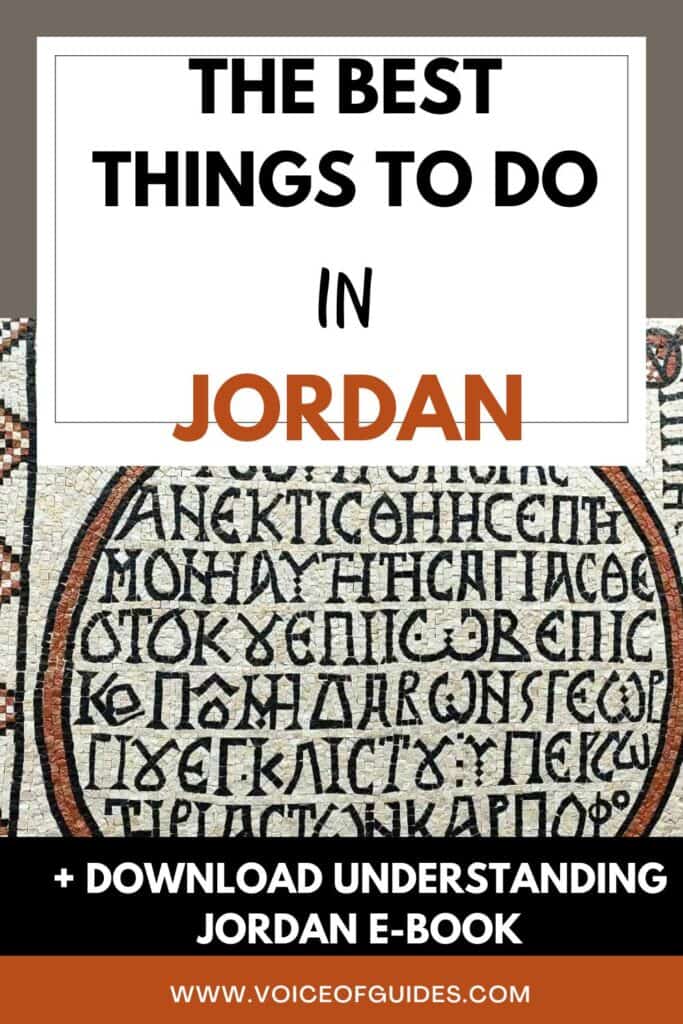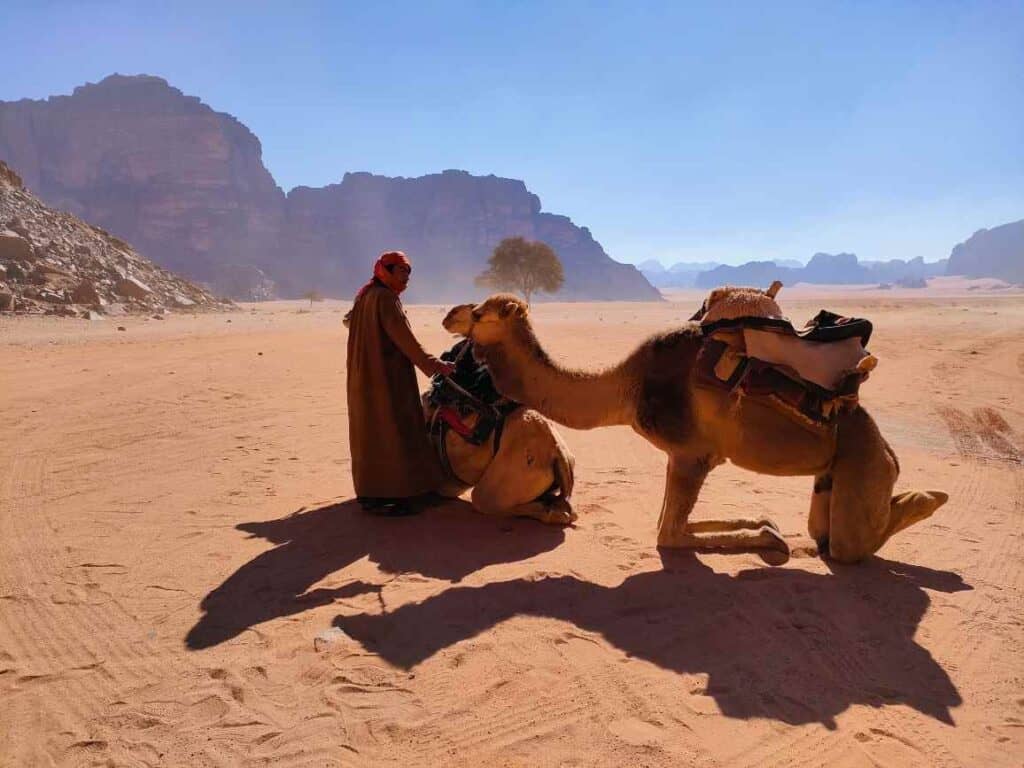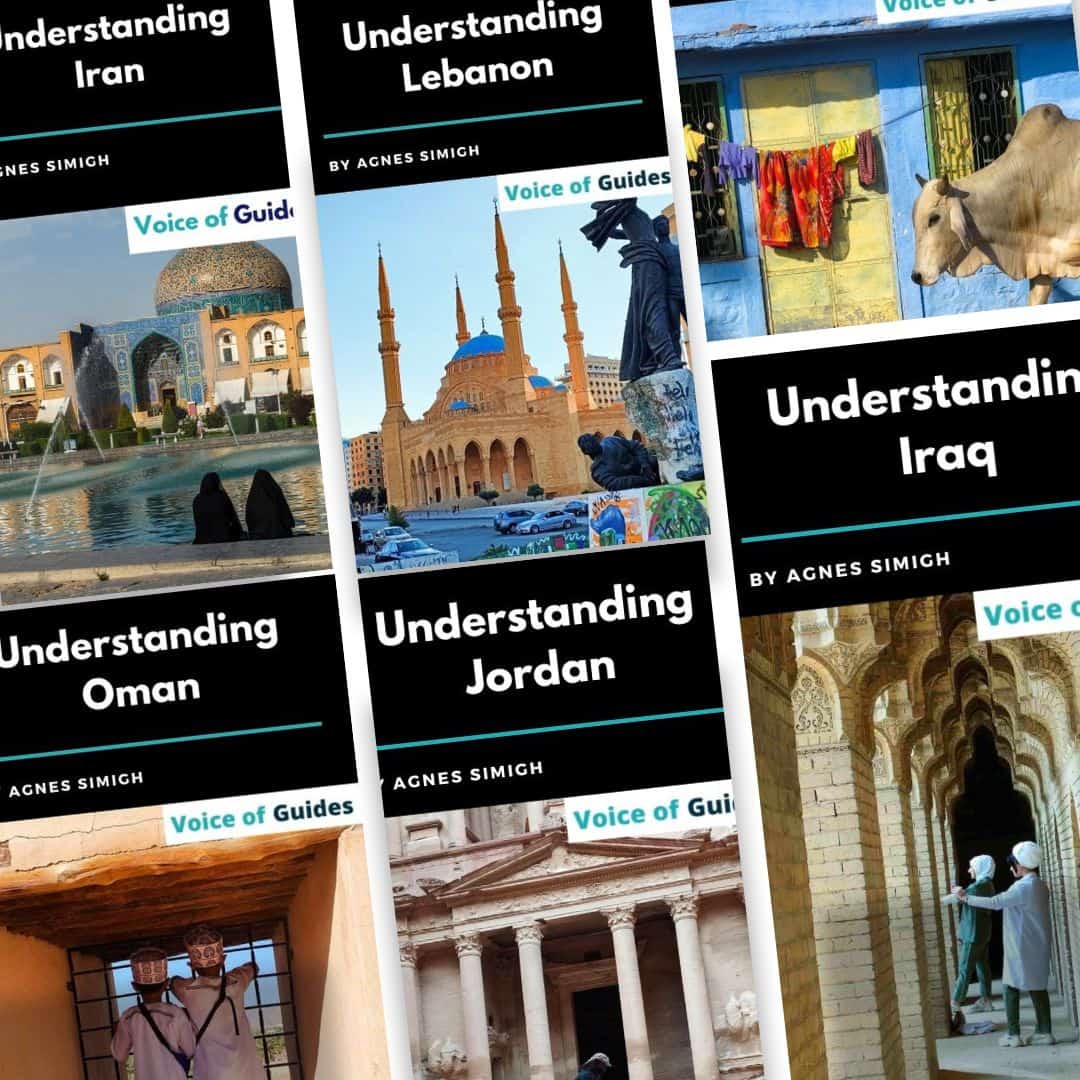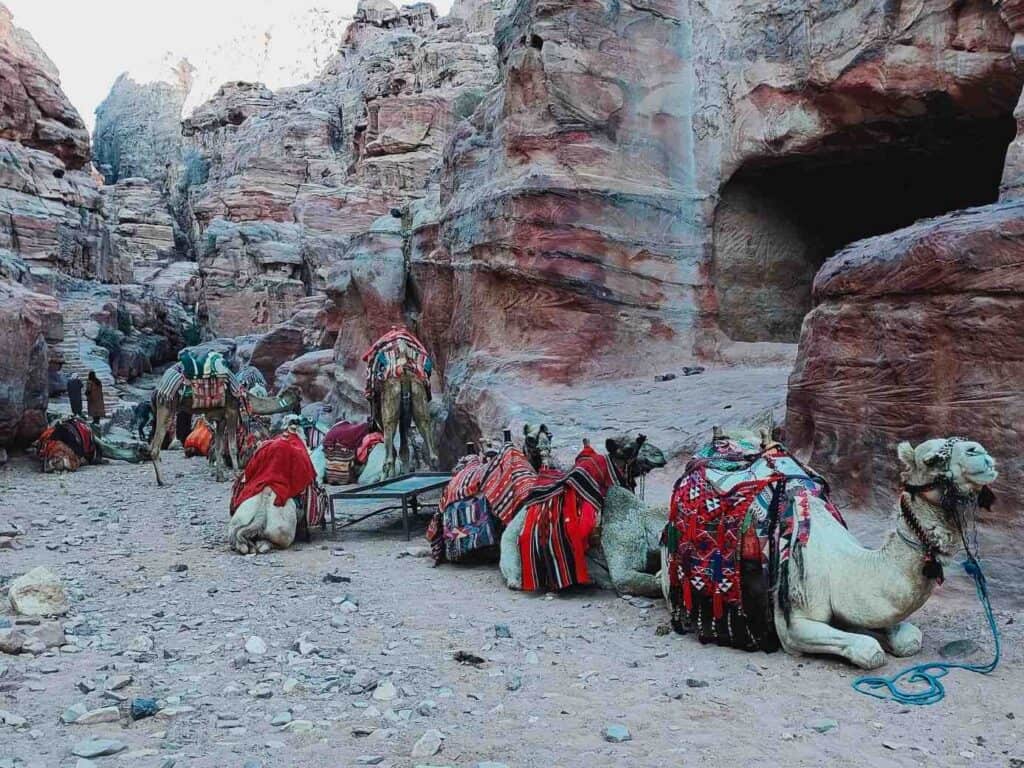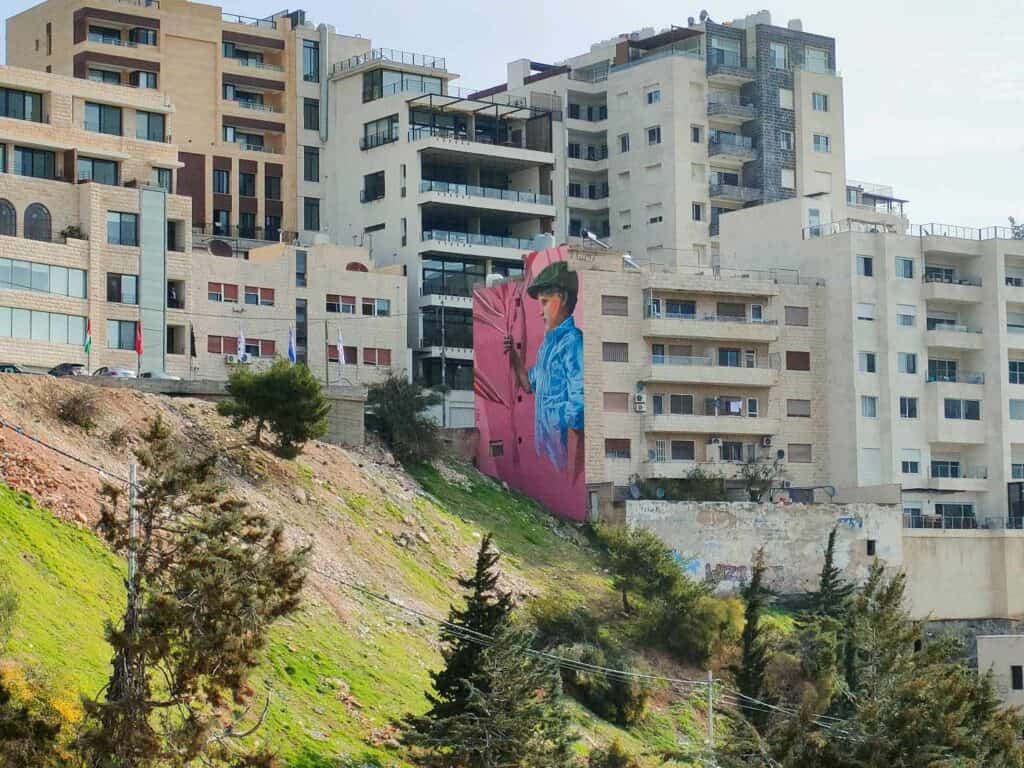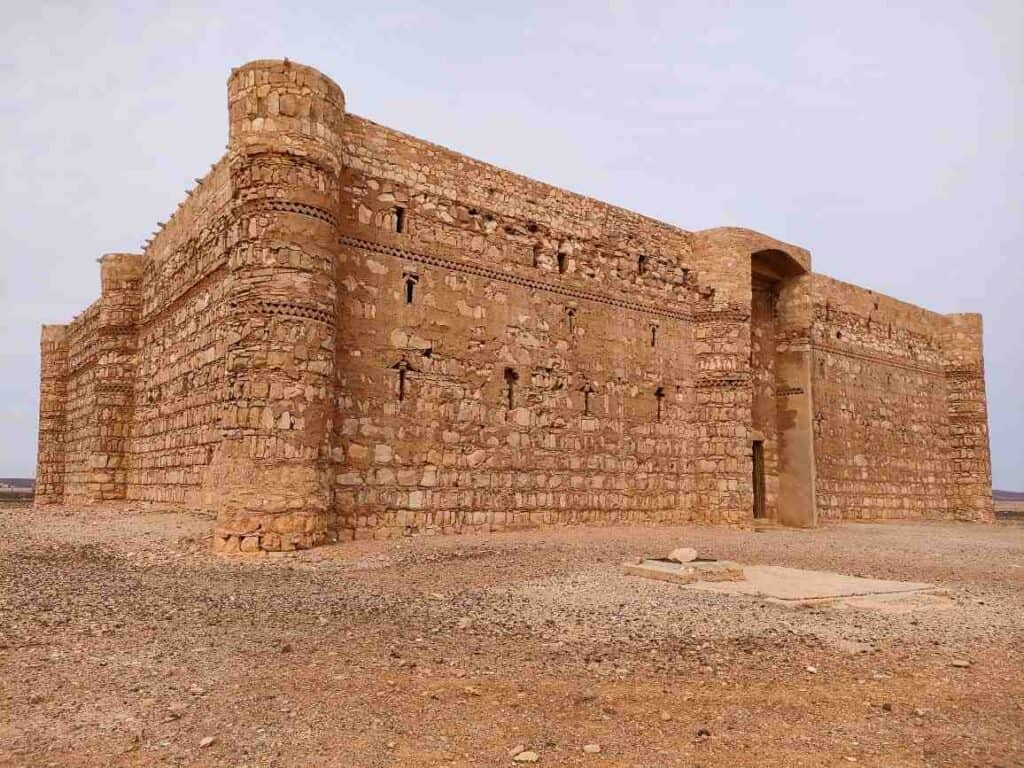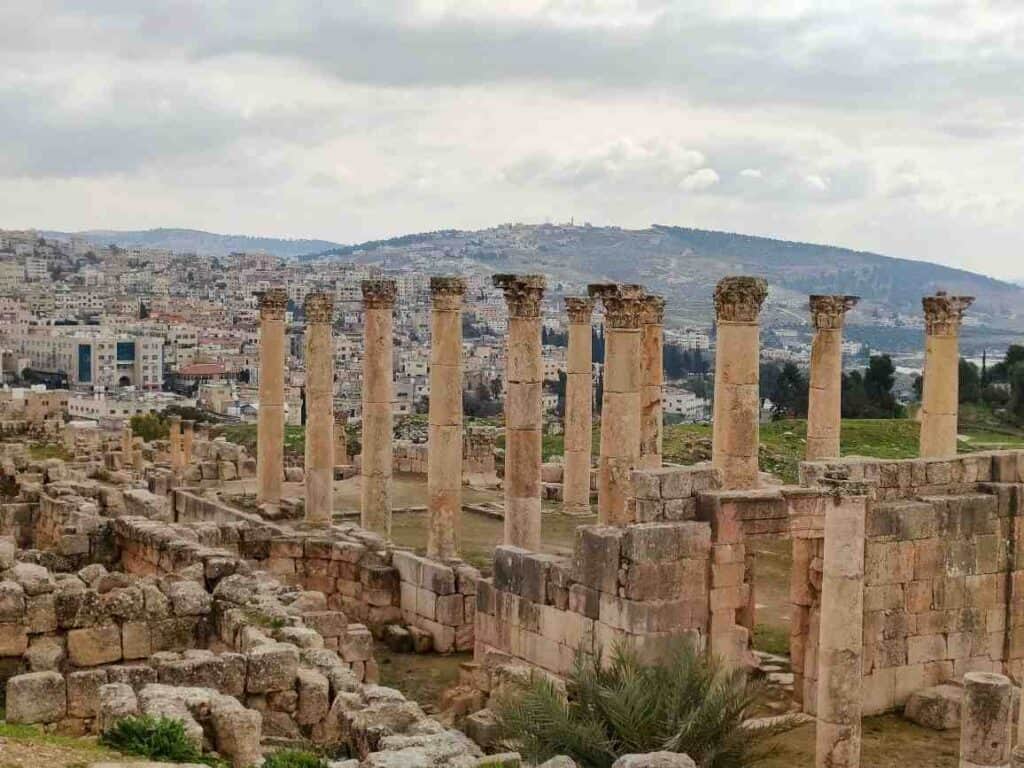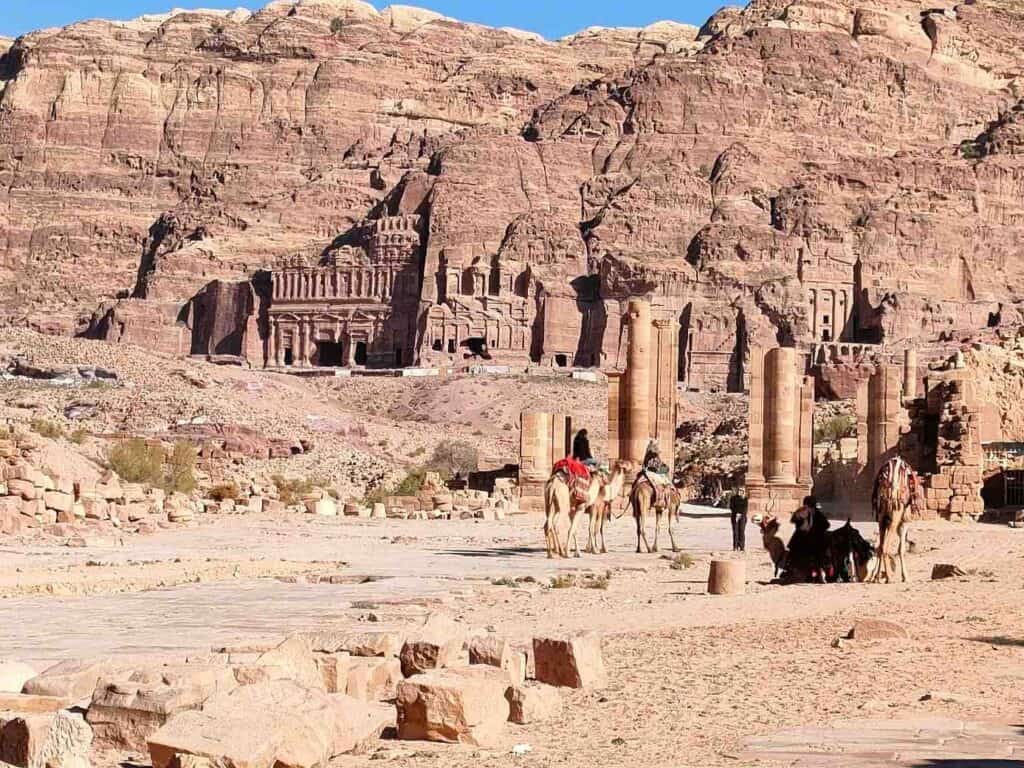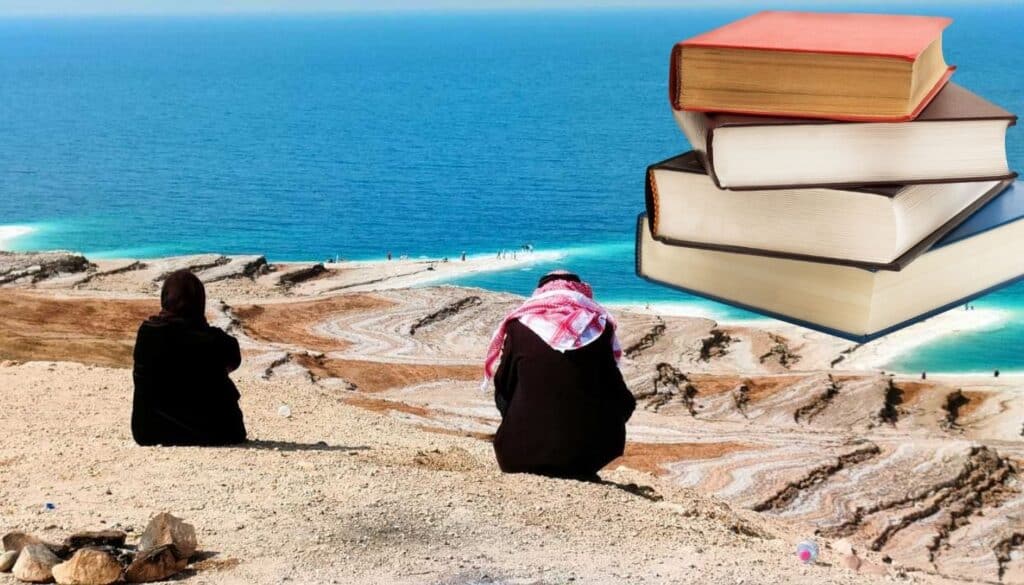This article may contain affiliate / compensated links. For full information, please see our disclaimer here.
A week in Jordan is enough to visit the main tourist attractions if you get around with a car, but you need 10 days for the same itinerary if you are backpacking in Jordan, depending on public transport. Your perfect Jordan itinerary depends on the place of arrival and departure (Aqaba or Amman) and your interest (cultural travel, hiking and diving). In any case, you should plan at least 5, but ideally 10 days in Jordan to have a good overview of the country. Coming over from Egypt and Israel only to see Petra on a day trip gives little insight into this Middle Eastern country. In this travel guide, you find the best 5, 7 and 10-day Jordan itineraries focusing on a cultural visit to Jordan but including nature activities in the more extended programs. You will find different travel itineraries for arriving in Aqaba and Amman.
All you need to know for planning a trip to Jordan
- How many days do you need in Jordan?
- The best Jordan itinerary 5 days from Amman to Aqaba/Amman
- The best Jordan itinerary 5 days from Aqaba to Amman/Aqaba
- The best Jordan one week / 7days itinerary from Aqaba to Amman/Aqaba
- The best Jordan one-week/7days itinerary from Amman to Amman/Aqaba
- The best 10 days Jordan itinerary from Aqaba to Amman/Aqaba
- The best 10 days Jordan itinerary from Amman to Aqaba/Amman
- The main attractions of your Jordan itinerary
- Aqaba
- Wadi Rum, the Valley of the Moon
- Petra, the highlight of a trip to Jordan
- Madaba – the city of mosaics
- Mont Nebo – the memorial site of Moses
- Dead Sea – one of the best places to visit in Jordan
- Mukawir (Machaerus)
- Kerak castle (al-Karak)
- The Kings' Highway
- Wadi Mujib or Wadi Numeira
- Hammamat Ma'in
- Bethany beyond the Jordan river
- Dana Biosphere Reserve
- The Jordan desert castles
- Amman
- Jerash, Ajloun, Umm Qais
- Petra
- Other articles about Jordan
- Other posts about the Middle East
- Pin it for later!
- Other posts about Jordan
How many days do you need in Jordan?
It depends mainly on your interest and mode of transport. One week is enough to see the main attractions if you are in a car. However, if you are backpacking in Jordan, for the same itinerary, you need 10 days as public transport is scarce or non-existent in some places. Ten days is ideal for getting to know the cultural monuments and enjoying nature, including some relaxing at the Dead Sea or Aqaba. However, even in 5 days, you can see the highlights of the Hashemite Kingdom.
The easiest and fastest way is to rent a car for your trip to Jordan, giving you flexibility without joining expensive private tours.
How to plan your trip to Jordan?
Flights: find the best flight deals on Skyscanner
Rent a car: Check Discover Cars‘ deals for driving around in Jordan (the best way to discover the country)
Insurance: Safetywing is a cheap insurance that covers all medical issues, including COVID-related ones. This is what I use every time.
Hotel/Hostel: Booking.com
Local tours and guides in Jordan: Toursbylocals, GetYourGuide and Viator offer several customized tours to Petra
Public transport+renting a car
You can also combine public transport with renting a car for a few days as I also did. I covered most places with shared taxis, minibuses, and buses and rented a car for a few days. In this way, I could travel on a budget in Jordan, even as a solo female traveler, and make most of my trip without wasting too much time.
Another option is to sign up for the day trips organized by your hostel and hotel. It is more difficult to join such group tours when you travel in the low-season.
Public transport
It is possible to use public transport between
– Aqaba- Wadi Musa/Petra
– Wadi Musa/Petra – Kerak castle
– Kerak castle – Amman
– Amman – Jerash- Ajloun
You should rent a car to go to:
– The Dead Sea with Bethany ( the Baptism site)
– Dana Biosphere Reserve
– The Jordan desert castles
– Madaba
– Mount Nebo
– Umm Qais
– Wadis (for example, Wadi Mujib)
Renting a car in Jordan
Contrary to other Middle Eastern countries, driving in Jordan is relaxing and absolutely possible. It gives you the flexibility to stop at any viewpoints and get to places easily that are otherwise not accessible by car.
Check the price to rent a car for your trip in Jordan
The best Jordan itinerary 5 days from Amman to Aqaba/Amman
Day 1: Amman (1 night)
Spend the whole day discovering Amman after arrival
Day 2: Jerash, Mount Nebo, Dead Sea (1 night at the Dead Sea/Madaba (Amman)
Visit the Roman site, Jerash, to the north of Amman, and head to Mount Nebo to see the Byzantine mosaics and the burial place of Moses. Spend the evening swimming in the Dead Sea. Depending on your budget, stay for the night at one of the high-budget hotels at the Dead Sea, or return to Madaba or Amman.
Day 3: Petra (1 night in Wadi Musa/Petra)
Head early morning to Petra to make the most of your day in the most beautiful attraction of Jordan.
Day 4: Wadi Rum (1 night in Wadi Rum)
Head to Wadi Rum and enjoy the desert with a half-day jeep tour.
Day 5: Kerak castle, Amman/Aqaba
Take your flight from Amman and visit Kerak castle on the way.
Continue to Aqaba and stroll around in the Read Sea holiday resort.
The best Jordan itinerary 5 days from Aqaba to Amman/Aqaba
Day 1: Aqaba, Wadi Rum (1 night in Wadi Rum)
Head straight to Wadi Rum for a desert tour
Day 2: Petra (1 night in Wadi Musa)
Leave early morning for Petra to make the most of your day
Day 3: Mount Nebo, Madaba, Dead Sea (1 night at the Dead Sea/Madaba/Amman)
Head to Mount Nebo to see the Byzantine mosaics and the burial place of Moses. Visit the famous churches and archeological parks of Madaba. Spend the evening and the following morning swimming (floating) in the Dead Sea. Depending on your budget, stay for the night at one of the high-budget hotels at the Dead Sea, Madaba, or Amman.
Day 4: Jerash, Ajloun
Make a day trip from Amman to the ancient Roman site, Jerash, and to the Ajloun castle.
Day 5: Amman
Spend the day discovering the capital and take a flight from Amman
The best Jordan one week / 7days itinerary from Aqaba to Amman/Aqaba
Day 1: Aqaba, drive to Wadi Rum
Day 2: Wadi Rum (1 night Wadi Rum)
Day 3: Arrival in Petra (2 nights in Petra)
Day 4: One day in Petra
Day 5: Petra to Amman, Amman
Day 6: Jerash, Dead Sea (1 night at the Dead Sea)
Day 7: Madaba, Mont Nebo, back to Amman/drive to Aqaba
The best Jordan one-week/7days itinerary from Amman to Amman/Aqaba
Day 1: Amman (2 nights in Amman)
Day 2: Jerash, Ajloun, Umm Qais
Day 3: Madaba, Mont Nebo, Bethanie (1 night at the Dead Sea)
Day 4: Dead Sea and drive to Wadi Musa/Petra (2 nights in Wadi Musa)
Day 5: One day in Petra
Day 6: Drive to Wadi Rum (1 night in Wadi Rum)
Day 7: Drive back to Amman or take a flight from Aqaba
This itinerary takes 10 days to complete if you are backpacking in Jordan.
The best 10 days Jordan itinerary from Aqaba to Amman/Aqaba
Day 1: Arrival at Aqaba, drive to Wadi Rum
Day 2: Wadi Rum (1 night Wadi Rum)
Day 3: arrival in Petra (2 nights in Petra)
Day 4: Petra
Day 5: Petra to Dana Biosphere Reserve ( 1 night in Dana), hiking in Dana
Day 6: Drive to Amman and visit Amman (3 nights in Amman)
Day 7: Jerash, Ajloun, Umm Qais
Day 8: Day trip from Amman to the Jordan desert castles
Day 9: Madaba, Mont Nebo, Bethanie, Hammamat Ma’in (1 night at the Dead Sea)
Day 10: Dead Sea (hiking in Wadi Numeira), drive back to Aqaba or Amman
The best 10 days Jordan itinerary from Amman to Aqaba/Amman
Day 1: Arrival in Amman, visit Amman
Day 2: Day trip from Amman to Jerash, Ajloun, Umm Qais
Day 3: Desert castles, Amman
Day 4: Day trip from Amman to Mount Nebo, Madaba, Mukawir, Hammamat Main (1 night in Madaba)
Day 5: Bethanie, Dead Sea (1 night at the Dead Sea or Madaba)
Day 6: hike in Wadi Numeira or Wadi Mujib (1 night in Amman, the Dead Sea, or Madaba)
Day 7: Karak castle, Little Petra (2nights in Wadi Musa)
Day 8: Petra
Day 9: Wadi Rum (1 night in Wadi rum)
Day 10: Drive to Aqaba or back to Amman
The main attractions of your Jordan itinerary
Aqaba
Apart from snorkeling, diving and swimming, Aqaba, the main port city, does not offer many cultural attractions. It was developed into a holiday resort with a series of hotels and restaurants. Aqaba is the main stop to head to Palestine, Egypt, or Saudi Arabia and for Red Sea snorkeling.
If you go to the beach from the center, you see tons of small glass boats that offer tours (30 minutes for 15 JOD officially), but they even take you for 5JOD for a little shorter round to check out the coral reefs.
The main sights of Aqaba:
– Aqaba fort: not something impressive at all
– Arab Revolt Flagpole
– The Seaside promenade: nice to stroll around in the evening and watch as locals picnic, have a shisha, and families and friends relax. If you continue till the end of the promenade, you will see plenty of restaurants that all offer shisha and are located right at the sea.
– Sharif Al Hussein bin Ali Mosque: It is named for the great-great-grandfather of the current king, the emir of Mecca, who proclaimed the Arab Revolt
– vegetable and fruit souk
– Masjid Al Sheikh Zayed: the modern mosque is probably the most attractive monument in Aqaba. It is less known, perhaps because it is located on the developing outskirts of Aqaba. Its shape, with 28 domes and two high minarets, recalls the Sheikh Zayed Mosque in Abu Dhabi. The mosque’s Islamic decoration is the work of Jordanian artists.
If you want to relax in Aqaba at the Read Sea, InterContinental Hotel and Mövenpick Resort Hotel open their pools to non-guests for a day-use fee (around JD30).
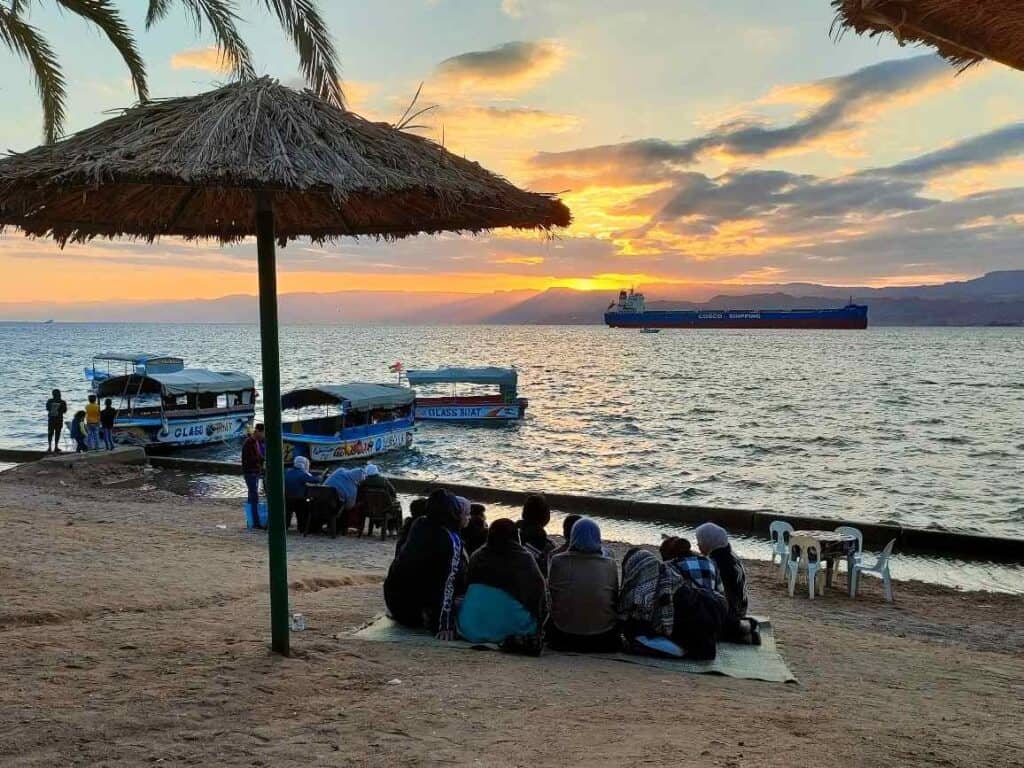
Where to sleep in Aqaba?
Low budget: City Center Hostel is one of the budget options for a private room. Otherwise, there are dormitories that you can book here.
The Bedouin Village Camp is the most budget option at the south beach, where you stay in a traditional Bedouin tent.
How to go from Aqaba to Wadi Rum by public transport?
There is only one Jett bus at 8 am every morning from the bus station near Hotel Mövenpick to Wadi Rum (1 hour), or the same bus continues to Wadi Musa-Petra (2 hours).
You can only buy your ticket on the same day so show up at 7:30 am at the counter. It costs 5 JOD.
The bus stops for a photo between Aqaba and Wadi Rum at the famous Hejaz railway, built between 1900 and 1908 for the pilgrims from Damascus to the holy city of Medina. The almost 1500 km-long line significantly reduced the travel time compared to the journey with camels. Since a big part of the railway track was destroyed during the Arab revolt, it only operated for ten years.
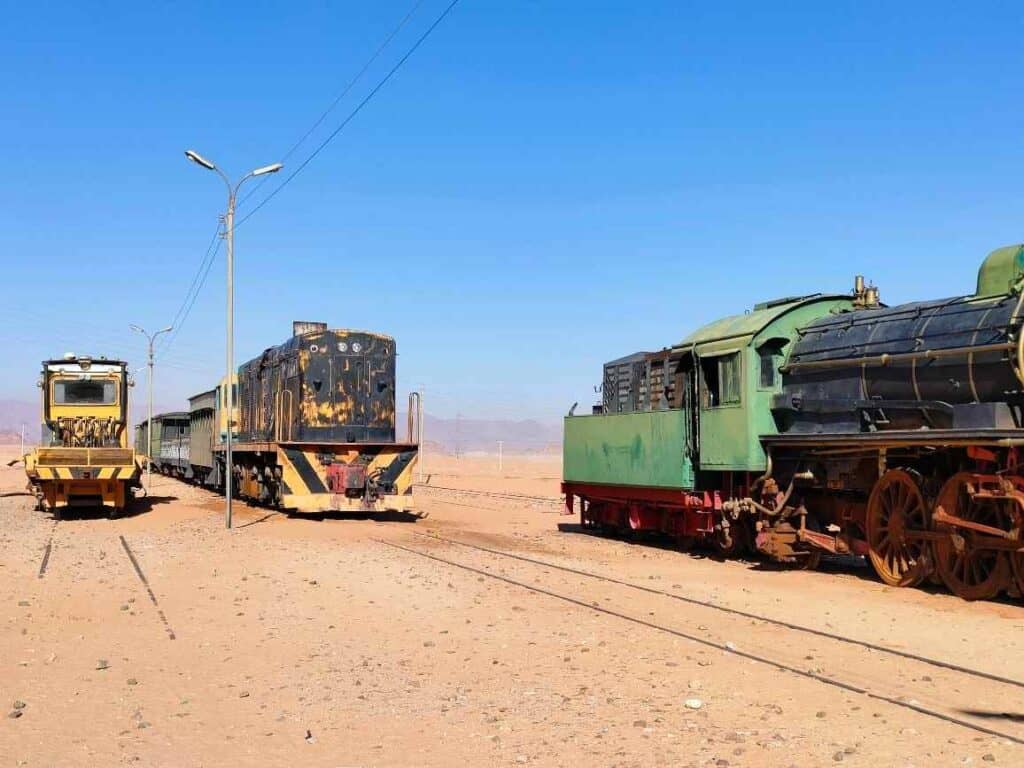
How to go from Amman to Wadi Rum?
You have three options to go from Amman to Wadi Rum:
There are no direct Jett buses from Amman to Wadi Rum, but you can go by bus to Aqaba and take a private taxi to Wadi Rum.
You can go by private taxi from Amman to Wadi Rum.
Join a group tour from Amman to Wadi Rum.
Wadi Rum, the Valley of the Moon
70 km north of Aqaba lies Wadi Rum, one of the most beautiful desert landscapes in the world and a highlight of every Jordan travel itinerary. The area known as Wadi Rum is not a single valley but a series of gorges opening from each other, stretching for 130 km in a north-south direction. The stunning forms of dunes and sandstone cliffs of different colors show the power of wind and rain over millions of years.
Jebel Rum (1754 m) dominated the center of Wadi Rum. It was considered the highest mountain in Jordan for a long time, but it turned out that Jebel Umm ad Daami (1832 m) on the border with Saudi Arabia is the highest.
After being home to desert travelers, by the 4th century BC, Rum became part of the Nabatean Empire. The Nabateans built temples and carved inscriptions into the rock, several of which can still be seen today.
The Western world knew Wadi Rum through Lawrence of Arabia, who visited the valley in 1917.
Legend
According to an ancient Bedouin tale, after God created the world, he sent his angels with skillful hands to paint everything they saw with glorious colors. However, when they returned after completing their task, the Lord noticed that a large area south of the Jordan River remained white. Out of anger, he sent all of them there, and the angels created this extraordinary mix of colors in Wadi Rum, the Valley of the Moon, making it unforgettable.
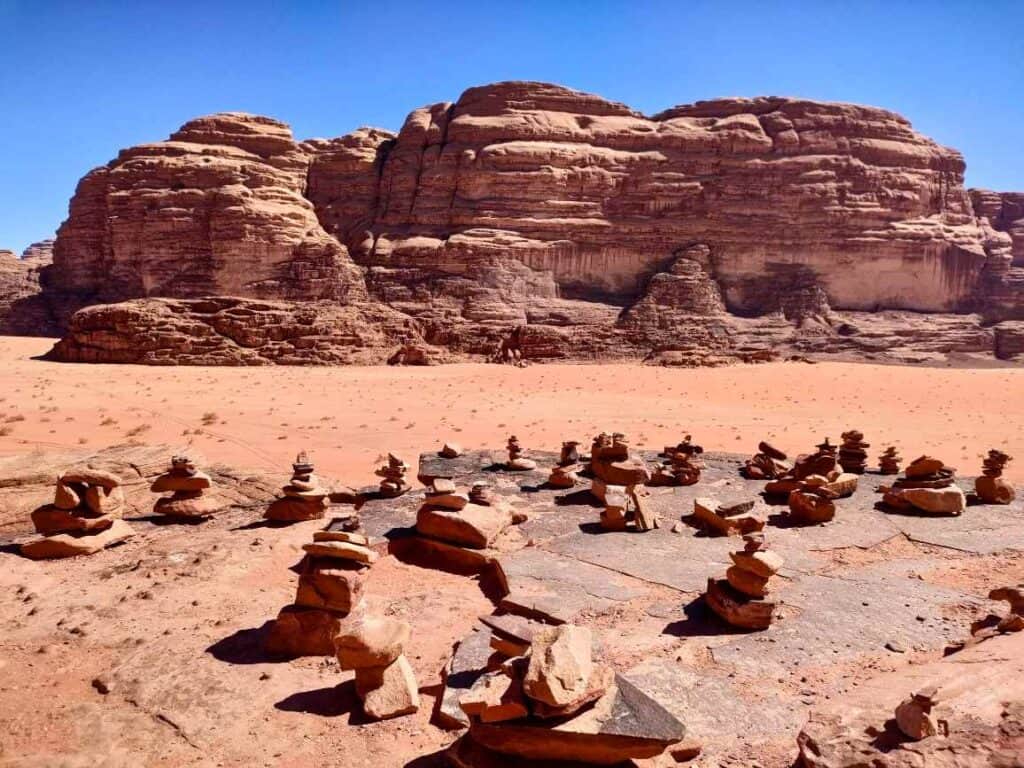
What is the best time to visit Wadi Rum?
Wadi Rum is best visited in early spring (March-April) or late autumn (October-November). It often rains in winter (December-February), and snow is not uncommon either. In summer, the desert is unbearably hot; from May to September, the temperature exceeds 40 degrees Celsius. Nevertheless, take a thick sweater with you even in summer because the temperature often drops at night.
The Bedouins of Wadi Rum
The desolate but beautiful landscape is the home of the Bedouins, the experts of the desert. Most of them belong to the Huwaitat, one of the largest tribes in southern Jordan, and consider themselves descendants of the Prophet Muhammad. Some are desert nomads, and the rest live a settled life. The local Bedouins are proud but extremely friendly, especially those in the desert.
Many Bedouin families continue the herding-nomadic desert lifestyle of their ancestors, although most of them add a Toyota van to the camel-goat-tent combination.
Rum village
This is the village of the Bedouins at the entrance of Wadi Rum, where all travelers arrive.
The Indiana Jones series and Lawrence of Arabia were shot in Wadi Rum in 1962, starring Omar Sharif, Anthony Quinn and Sir Alec Guinness, with fantastic shots of the desert landscape. With its moon-like landscape, Wadi Rum is a favorite place for science fiction producers.
Wadi Rum Tours
Every wadi Rum camp organizes different types of tours. The most typical is the 4-hour jeep tour that includes the following stops:
– Lawrence Spring and Lawrence House
– One of the rock bridges (little bridge, Umm Frouth rock bridge, or Burdah rock bridge)
– Khazali canyon with some 2000-year-old inscriptions
– Nabatean temple with an inscription dating back to the 2nd century BC and the seven pillars of wisdom rock formation
– Mushroom rock after its shape
Apart from that, you can have a full-day or multi-day jeep tour, camel ride, or hiking or walk around and enjoy the desert.
Spending a night in a Wadi Rum is highly recommended to immerse in the magic of the desert.
Check the tours to Wadi Rum here
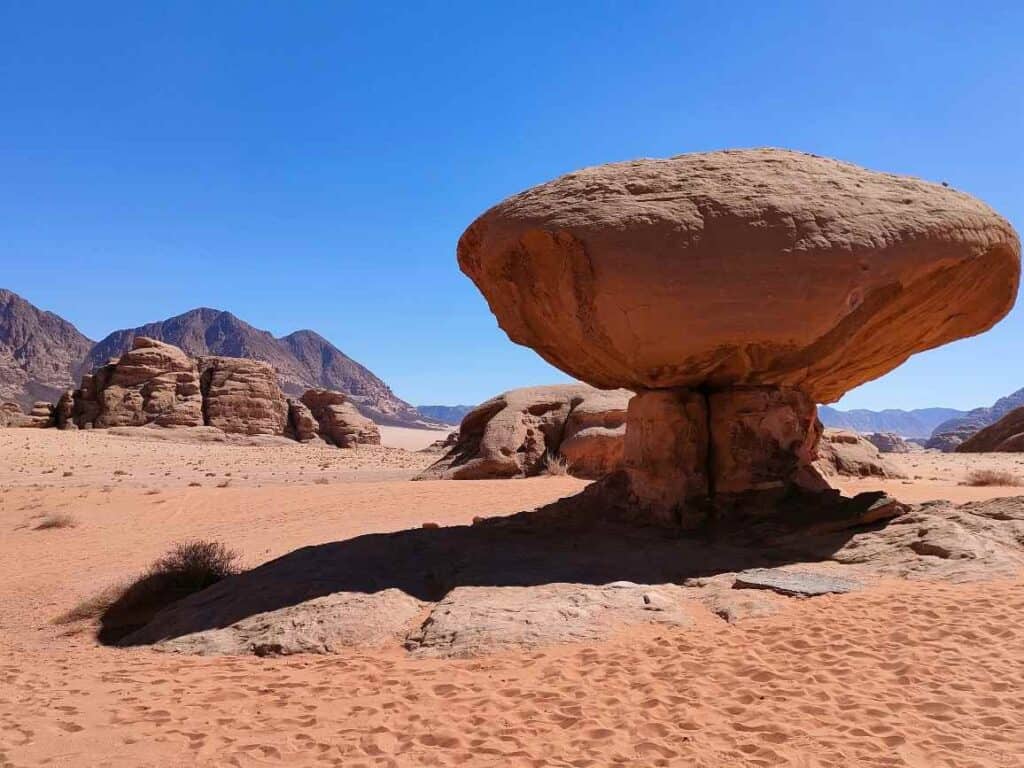
Where to stay in Wadi Rum?
There are a couple of things you should consider when choosing the perfect camp:
- Location: is it deeper in the desert or closer to Rum village
- Is it close to other camps or lies in pleasant isolation
- Does it have heating? (important in the colder months)
- Does it have a private or shared bathroom?
There are camps for all budgets, which means you don’t especially have to spend a fortune to have this unique experience of sleeping in Wadi Rum. Based on the feedback of other travelers, here is a list of some of the best desert camps:
Fire camp – low-budget camp, this is where I stayed. I was skeptical as it was so cheap, but I loved the place. Although there was no heating, and it was cold in February at night, the camp’s remote location was perfect for enjoying the desert with a simple but delicious dinner, after which we could stay to chat, drink tea and smoke shisha.
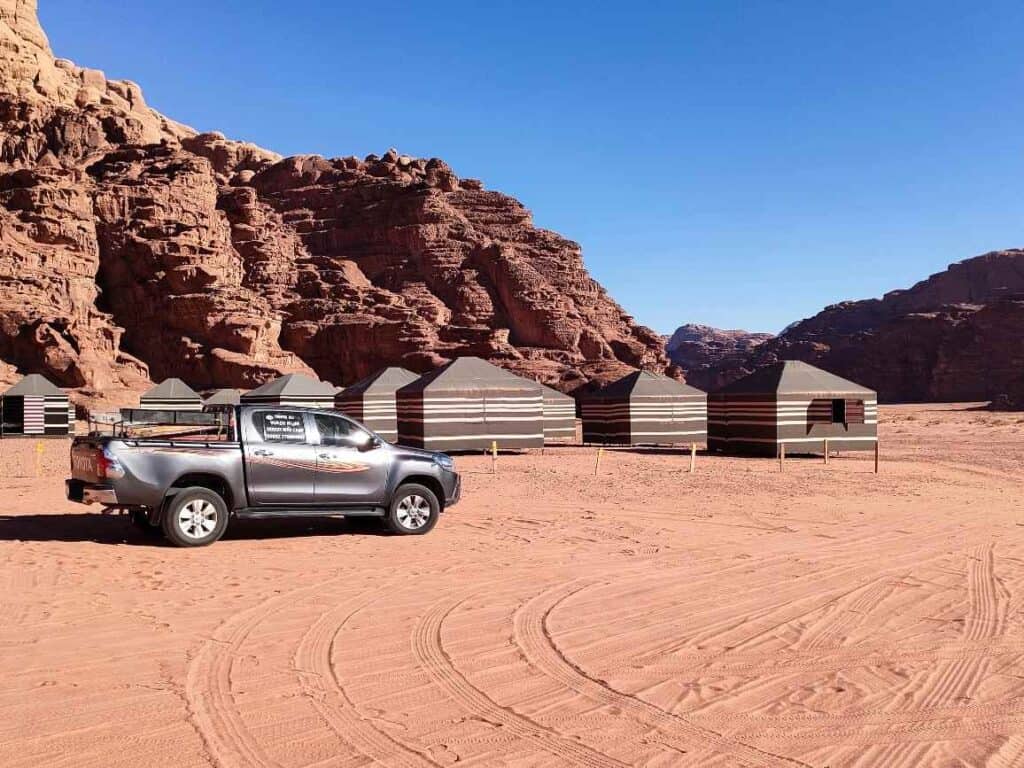
How to go from Wadi Rum to Petra by public transport?
The same bus that comes from Aqaba to Wadi Rum continues to Petra. It starts at 9 am from Wadi Rum. That is the only bus daily and costs 10 JOD (1 and a half hours).
The Aqaba-Wadi Rum and Wadi Rum-Wadi Musa (Petra) public transport are relatively expensive compared to the general prices on non-touristic roads, where you can get to a place at a 1-hour distance for 1 JOD.
Also, from Aqaba to Amman, one route costs 10 JOD (4 and a half hours).
Book your bus or public transport from Wadi Rum to Wadi Musa/Petra
Petra, the highlight of a trip to Jordan
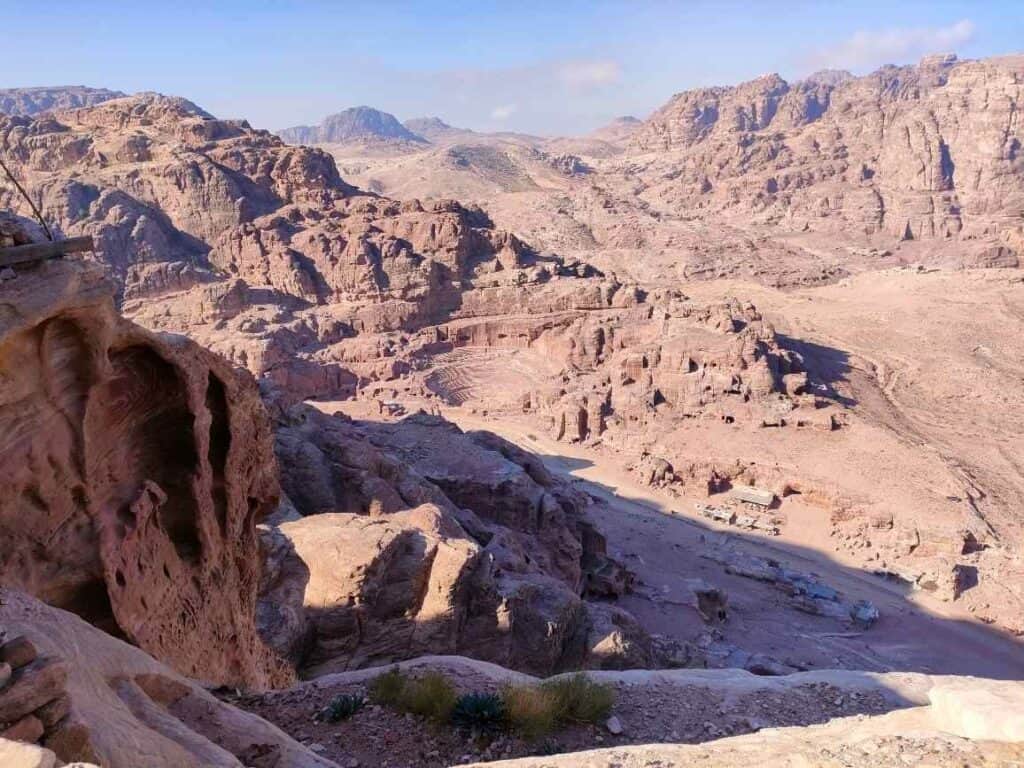
There are so many important things to know about Petra that I wrote a separate post about the best one- and two-day Petra itineraries and all you need to know before visiting Petra and other less-known gems like Little Petra.
For example, don’t spend only a couple of hours on the Main Trail, but take some side trails to make the most of your visit in the ruined city, the most famous attraction of Jordan. In this travel guide to Petra, you find everything from the best time to visit, the things to see, and recommendations about the best way of visiting Petra.
Madaba – the city of mosaics
Madaba, a mainly Christian small town, keeps its ancient traditions. It flourished in the Byzantine period when many churches were constructed with valuable mosaics. Most are the works of local masters and depict animals, plant motifs, vines and acanthus leaves.
The most famous mosaic depicts the map of the Holy Land, discovered in 1897. It covers the area in front of the main altar in the St. George church. Besides mosaics, Madaba is also famous for its brightly colored woolen carpets.
Madaba was an important stop along the trade route between Damascus and the Red Sea, the historical “King’s Road”. The Bible mentions it as Medea. The city was founded in 850 BC by the Moabite king Mesha after repeated victories over the Israelites. The Moabites were a Hebrew-speaking, Jewish-related people. Later, the settlement fell into the hands of the Amorites and the Israelites coming from Egypt.
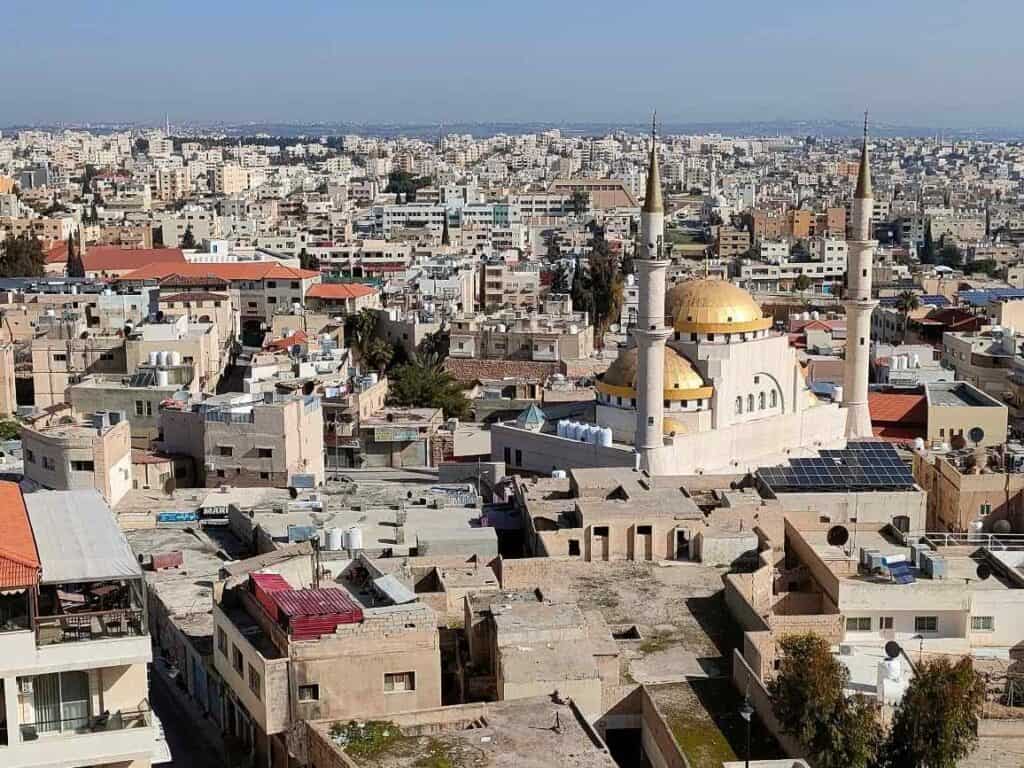
After several centuries of Moabite and Nabatean rule, the Roman Empire conquered it when Trajan captured the Nabatean kingdom in 106. Christianity spread rapidly in the first century, but the Romans persecuted the believers. Many were martyred for their faith in Madaba. After Emperor Constantine made it the state religion in the 4th century, Christianity flourished in the 6th-7th centuries. Many churches were built during the Christian-Byzantine era with impressive mosaic floors and decorations.
The city could avoid the mosaics being damaged, although Islam forbade depicting people and animals. A great earthquake flattened Madaba in the 8th century, and there was no account of the city until the 19th century.
In the 1880s, about 2 000 Christians arrived from Kerak and began to build houses and churches using the remains of the old buildings while also renovating the old ones. When they started the construction, they found mosaic fragments at the foundations. They saved some of them to their houses, and even today, it is not impossible to find an interesting archeological artifact.
Mosaic making in Madaba
Madaba has a long tradition of mosaic-making based on patterns. In Byzantine times, they started to use natural stones instead of tiles. The local stones had various colors and remained surprisingly lively even after 1400 years. Mosaic floors were only used in churches, prominent buildings, and wealthy people’s houses. The mosaic makers were usually grouped in schools. They borrowed most of the themes from nature: flowers, birds, trees, fish, and exotic wild animals, but they also displayed Greco-Roman mythological gods and geometric patterns.
Mosaic making became an everyday occupation in Madaba, like fishing, farming, and sailing.
The government opened the Madaba mosaic-making school in 1992 to preserve ancient traditions, train specialists in mosaic making and restoration, and promote Jordanian mosaics. The school is not a museum but an educational institution.
Archeological Park in Madaba
The archeological park was opened to show the unique mosaics and other remains from Roman time discovered during the excavations of the 1990s:
– a 1st century mosaic from Machareus fortress in Mukawir village, that is supposedly the oldest mosaic in Jordan
– colonnaded main street from Roman times that connected the two gates of Madaba
– The mosaics of the church of Prophet Elijah
– the most beautiful mosaics are under a structure covered with a protective roof, which belonged to the Byzantine villa from the beginning of the 6th century.
The Church of the Martyrs (7th century) and the Burnt Palace (probably burnt down in an earthquake in the 8th century) are also part of the Archeological Park.
The burnt palace is the remains of a Byzantine residence, built at the end of the 6th / beginning of the 7th century.
Both display expansive mosaic floors.
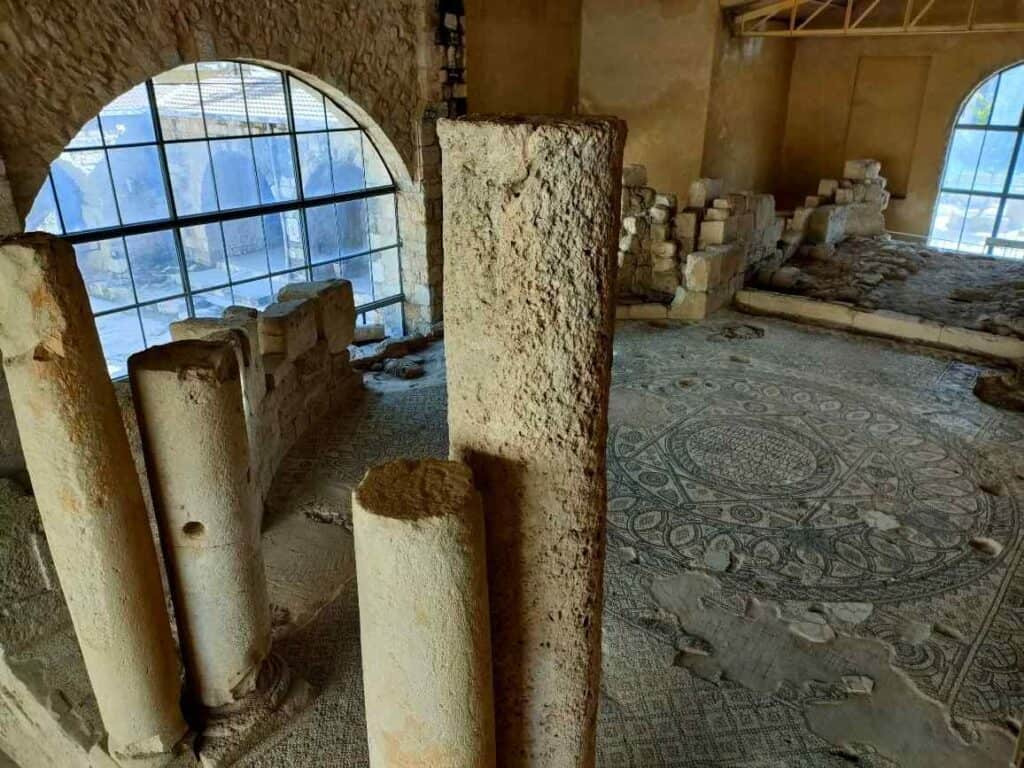
Church of the Beheading of St.John the Baptist (St.John Church)
Church of Saint John the Baptist was built in 1913 at the site where Saint John the Baptist was beheaded. He baptized his famous cousin, thus starting his public service and preaching to the people. Beautiful mosaics cover the entrance to the church made of semiprecious stones.
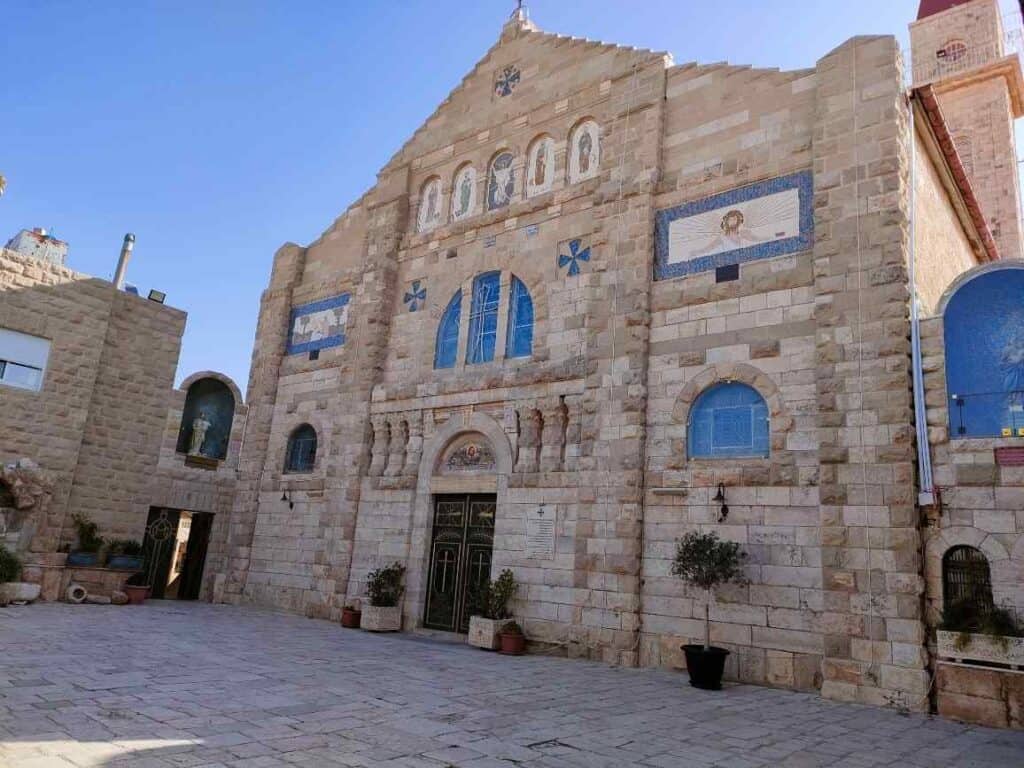
Church of St. George with the Holy Land map
The Greek Orthodox church, built in 1896, accommodates the map of the Holy Land. When excavation started, archaeologists and scientists came from all over the world. The map was made around 560 and depicted the area from Lebanon to the Nile Delta, from the sea to the desert. It initially measured 15.6m x 6m consisting of more than 2 million cubes. It is only 10.5m x 5m today since two-thirds of its original surface has been destroyed.
The map indicated the name of 157 settlements in Greek with different colors. The names of the most important biblical cities are in red. Two towers with a gate symbolize the city, while a church symbolizes the holy place. In the middle of the mosaic carpet is Jerusalem, the center of Christianity.
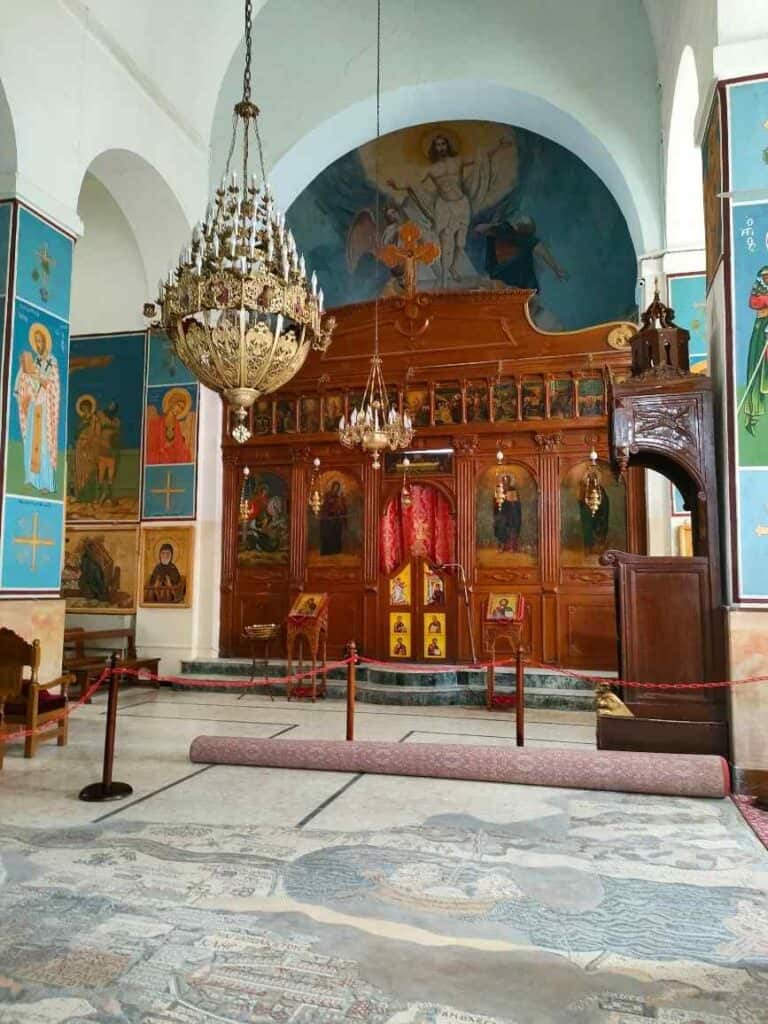
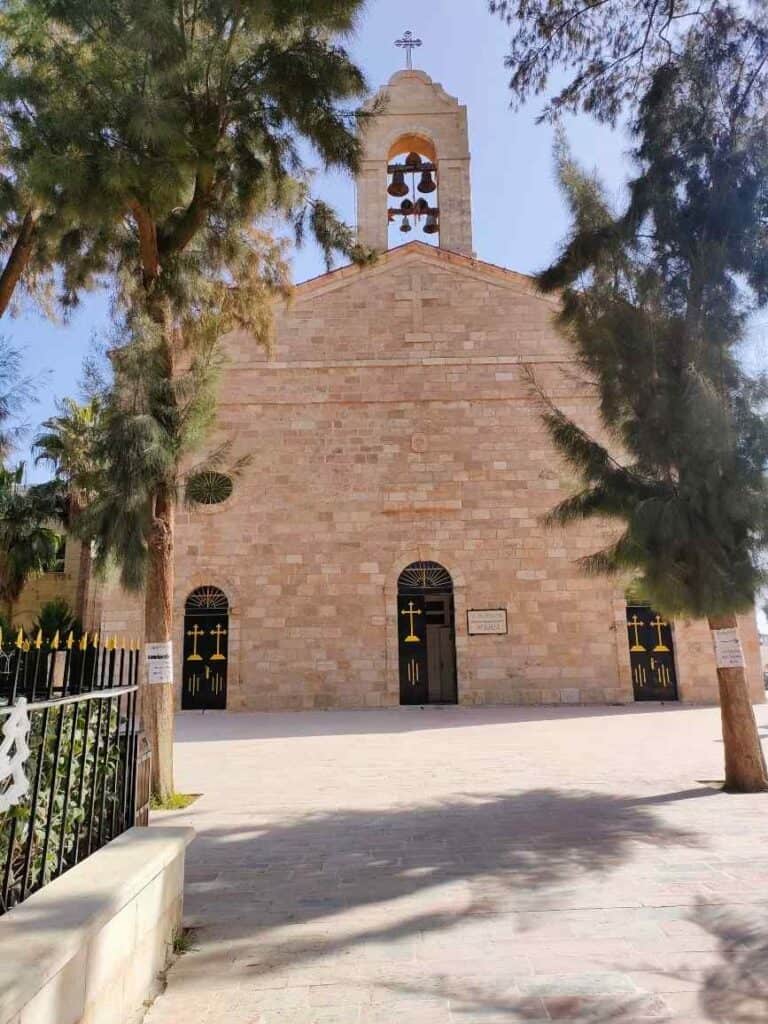
The most interesting part is the mini-map depicting Jerusalem, where the city walls, gates, the main street (cardo), and the Church of the Holy Sepulchre are clearly visible. Almost all the important sights of Jerusalem can be identified, which helped to determine the exact time of the mosaic.
Bethlehem, Judea, Neapolis (today’s Nablus), Hebron, Gaza, Jericho, and Kerak are clearly recognizable, like the valleys, mountains, rivers, and plains. The map shows the salinity of the Dead Sea in an interesting way: when the fish of the Jordan River reaches the point where the river meets the sea, they turn back and flee from the salty water.
Where to sleep in Madaba?
Moab Land Hotel is a perfect place to stay in Madaba, with dormitories and private rooms just opposite the St.George Church in the center.
Where to eat in Madaba?
Fokar & Bhar local restaurant is the most recommended place in Madaba.
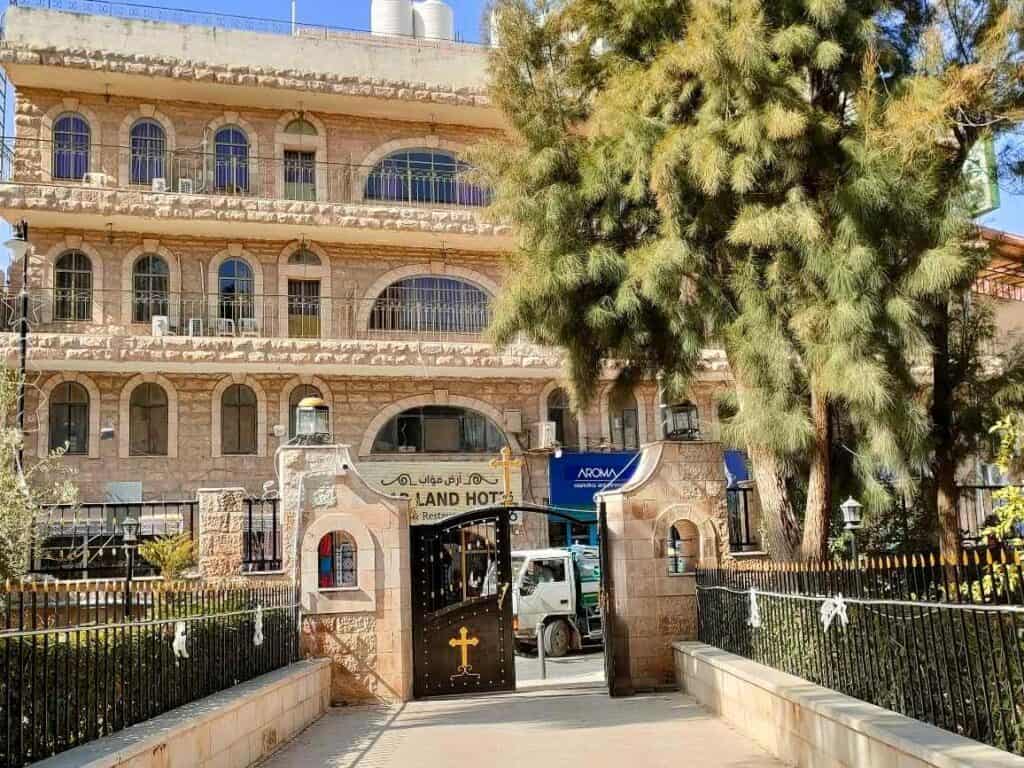
Mont Nebo – the memorial site of Moses
According to the belief, this is where Moses died and was buried, making Mount Nebo one of the holiest places for both Christians and Muslims.
After Moses led his people out of Egypt and wandered through the desert of Moab for 40 years, Jesus ordered him to go to the top of Mount Nebo, where he showed him the Promised Land, Canaan.
Apart from its religious importance, it offers a fantastic view of the Jordan valley and the Dead Sea. In clear weather, even Jerusalem, Bethlehem and Jericho are visible. A memorial recalls the event when Pope John Paul II visited the place and held a mass for 20 000 people on top of Mount Nebo in 2000.
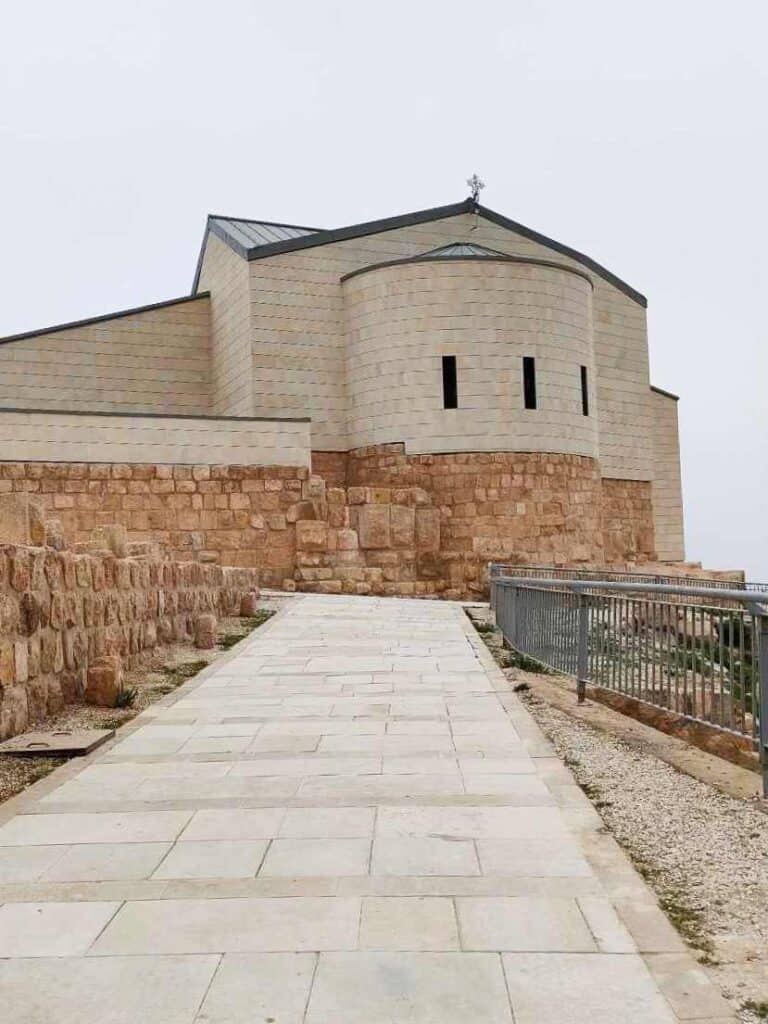
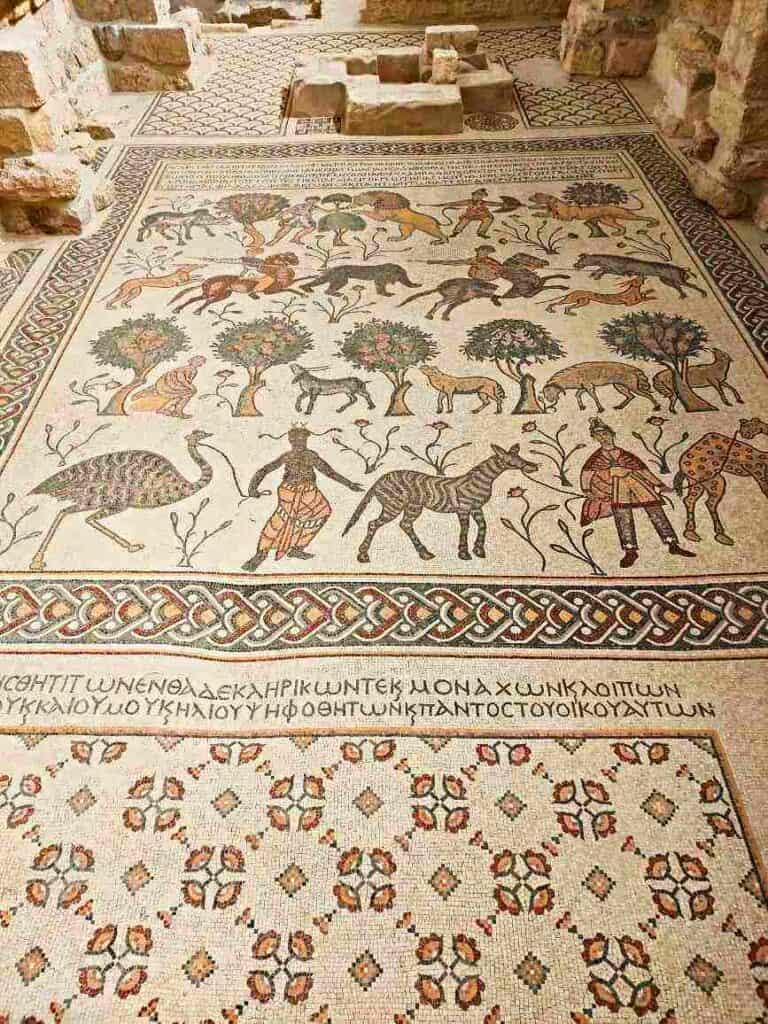
In the 1930s, they discovered the remains of the Siyagha monastery and Byzantine church erected in the 4th century where Moses died. Since then, it has been rebuilt several times. The modern Moses Memorial Church accommodates beautiful mosaics from the 6th century.
To the right of the apse of the central nave, a cross made of black and white mosaics is the place of Moses’ supposed tomb. This is the holiest place on Mount Nebo.
Entrance fee: 3 JOD (not included in the Jordan pass!)
Opening hours: December – January: 8am – 4 pm, November, February and March: 8 am – 5 pm, April to October: 8 am – 6 pm
Near the church, there is a serpentine with a cross called the Brazen Serpent sculpture created by an Italian artist. It symbolizes Jesus’ crucifixion and refers to the miracle in the Old Testament when Moses saved his people from the snakes sent by God as punishment for their lack of faith.
How to go to Mount Nebo?
Drive your rented car or go on a private tour without public transport. It is only 10 minutes from Madaba and easily reachable from Amman (~50 km).
Dead Sea – one of the best places to visit in Jordan
The 73-km-long Dead Sea is located along the border with Israel making it accessible from both sides. The Dead Sea’s water level is constantly diminishing. At 408 meters below sea level, it is the deepest point on earth, but this must be rewritten every year because it gets deeper and deeper due to the decreasing water level.
The Dead Sea is the saltiest sea, with 30% salt content. Due to its deep location, the atmosphere above the Dead Sea is thicker and largely filters out the sun’s harmful rays, meaning you cannot burn. Salt blocks that can no longer dissolve in the water are scattered in many places along the coast. The Dead Sea valley is mild in winter and hot in summer.
In the salty water, there is no life either. Due to the high concentration of minerals, the specific gravity of the water has increased significantly, and the human body floats freely in the water.
The Greeks and Romans also called it the Bitumen Sea because the Nabateans living on its shores sold bitumen to the Egyptians, who used it for insulation and mummification. In ancient times, ships carrying bitumen often crossed it, as seen on the Madaba mosaic from the 6th century.
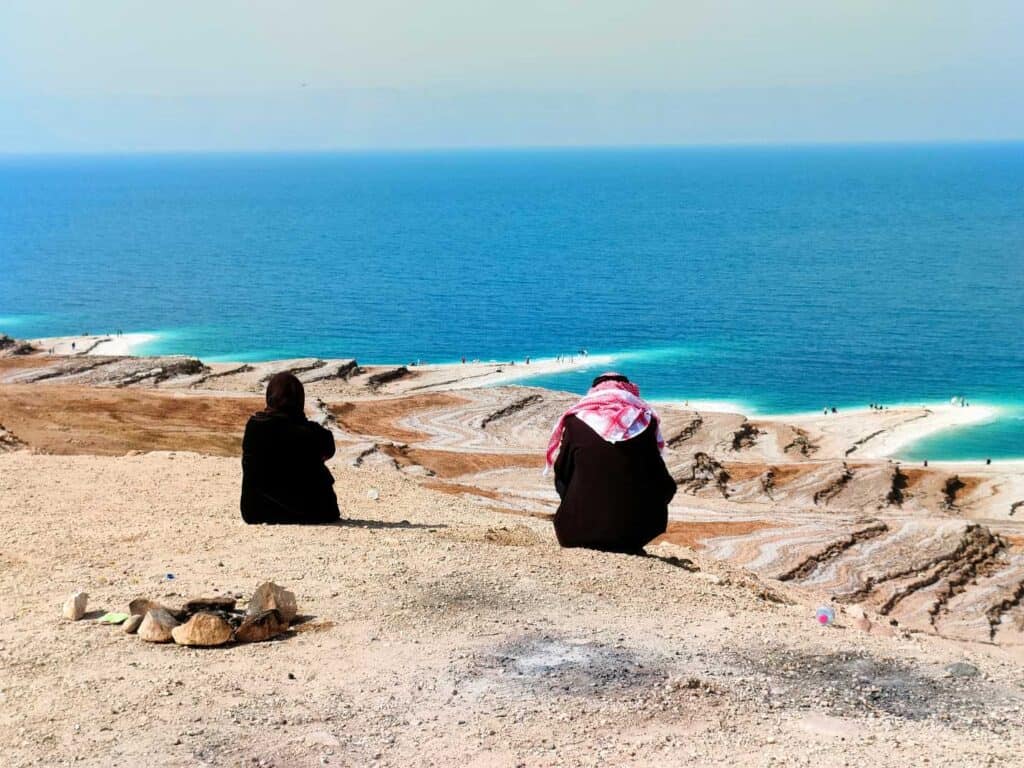
Coastal hot springs were already famous in Roman times. Herod the Great himself sailed across the sea to seek relief from his skin disease at a bathing place near today’s Herodes Spring. When a Bedouin goatherd found the first scrolls at Qumran in 1947, the Dead Sea was still a British mandate. But it belonged to Jordan after the first Arab-Israeli war in 1948. The world-famous scrolls were revealed during scientific expeditions between 1948-1956. However, after the 6-day war (1967), Israel took control of the entire western shore of the lake.
The water level is shrinking at an alarming rate of more than one meter per year. Its surface has shrunk by about 33% since 1960. It may completely dry out in 50 years if it continues like this. The main reason is that the Jordan river’s water that feeds the Dead Sea is used for agricultural purposes, and high temperature fastens evaporation. Another problem is that Jordan produces 4 million tons of potash annually from the waters of the Dead Sea. The southern basin already broke off in the 1980s and may dry up within a few decades. The Jordanian government wanted to solve it by building a 180 km long canal to transport water from the Red Sea to the Dead Sea. Thus they would restore historic water levels and generate enough electricity to desalinate the water that would supply drinking water to Jordan, Israel and the Palestinian territories. However, in 2021 Jordan announced the cancellation of the plan.
The Dead Sea’s healing effect was discovered already 2000 years ago during the time of Herod. Its black mud has been used as a cosmetic wrap for centuries.
The water contains chloride, bromide, sodium, magnesium, calcium, and potassium. The mud is also rich in calcium and magnesium, which is useful against allergies and respiratory infections. Bromine helps relaxation, iodine against specific gland problems, and bitumen makes the skin more beautiful.
There are several deserted beaches on the coast where you can take a dip for free.
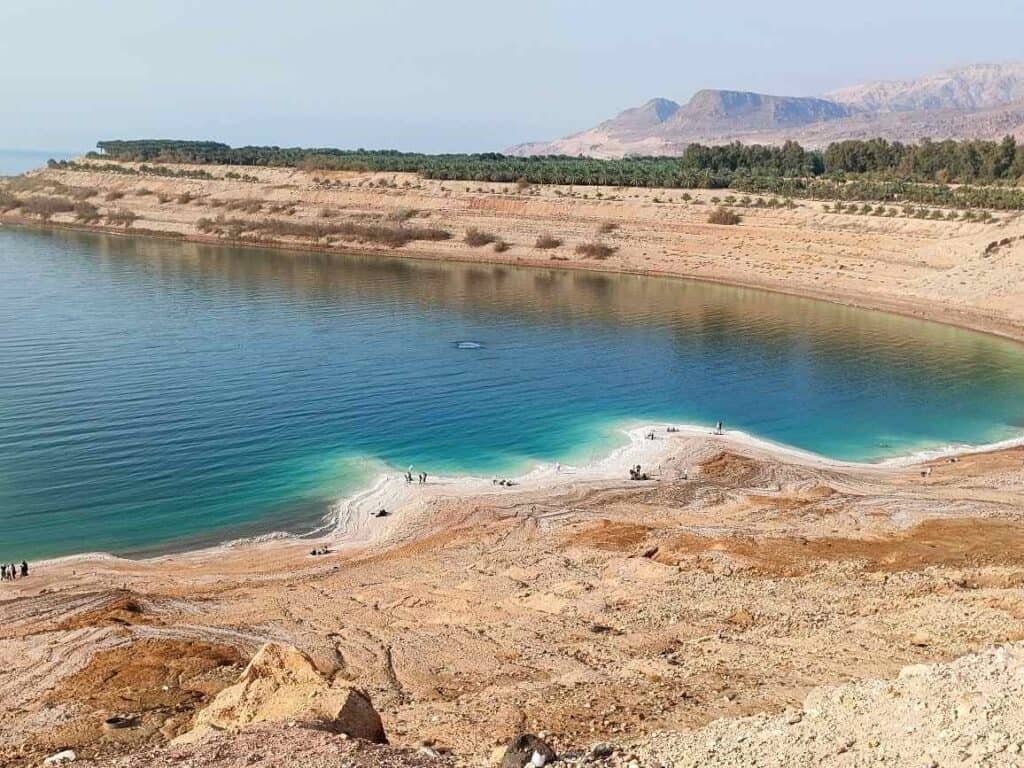
Where to sleep at the Dead Sea?
There are only high-budget hotels along the Dead Sea. If you don’t want to spend too much, stay in Madaba or visit the Dead Sea as a day trip from Amman.
You can buy a day pass at a resort, like the Dead Sea Spa Resort, with access to the beach. It costs 20 JOD.
Check the hotels at the Dead Sea here.
Dead Sea viewpoints
Several viewpoints are on the Dead Sea Highway and above in the mountains.
The Dead Sea Parkway connecting the King’s Highway with the Dead Sea is a touristic lookout point, 2 kilometers from the tourist road leading to the hot springs, Hammamat Ma’in.
Here you can find restaurants and souvenir shops and enjoy the view of the Dead sea.
How to visit the Dead Sea?
The best way to go to the Dead Sea is with a rented car or an organized tour. In this way, you are flexible to stop wherever you want. You can combine your visit to the Dead Sea with Madaba and Mount Nebo, one of the best day trips from Amman.
Mukawir (Machaerus)
When you are at the Dead Sea, you can combine it with a visit to the Machaerus fortress in Mukawir village. On top stand the remains of Herod’s castle. It is not the castle but rather the fantastic view of the Dead Sea and the mountain ranges that make the visit worthwhile. Herod’s successor, Herod Antipas, beheaded Saint John the Baptist in this castle.
This is where the Bani Hamida handicraft cooperative operates. The association wants to revive traditional weaving techniques (with looms and natural dyes), launch fund-raising campaigns for developing the region’s villages, and support local women’s financial independence. Over 1,400 women from 12 surrounding villages participate, either working in the Mukawiri gallery or their homes.
Visitors can purchase ceramics, baskets, jewelry, carpets, pillows, and bags at the Mukawiri showroom or the Jordan River Foundation store in Amman.
Entrance fee: included in Jordan Pass (3 JOD)
Kerak castle (al-Karak)
The Crusader’s castle dominates the city of Kerak, with a significant Arab Christian population. Kerak means fortress and castle, and it was part of a fortification system with Tafila, Shobak, Petra, and Aqaba all built one day’s ride from each other. Every night, they gave a fire signal from the castles towards Jerusalem, indicating that everything was fine.
It followed the King’s Highway on the east bank of the Jordan, stretching from the Dead Sea to Aqaba.
The expansive underground vaulted rooms and corridors are a unique part of the fortress. From the highest point, there is a beautiful view of the Dead Sea, the Jordan Valley, Wadi Araba, and, in good weather, even the Mount of Olives in Jerusalem.
Saladin, the famous Muslim sultan of Egypt and Syria who captured Jerusalem in 1187, occupied Kerak two years later. Saladin entrusted his brother to strengthen the fort. The Muslim rulers expanded it after and added more elegant parts compared to the Crusader’s time.
The Kings’ Highway
There are three highways that run parallel: the Desert Highway, King’s Highway, and Dead Sea Highway. The Dead Sea Highway is a panoramic route along the lake.
The Desert highway is less interesting, so instead, choose the King’s highway, the most picturesque of all with beautiful scenery, especially around the Dana Biosphere Reserve and Wadi Mujib.
It followed ancient trade routes, and the Biblical Magi (three wise men) are believed to have used it as part of their journey on the way to Bethlehem. Moses, buried on Mount Nebo, also led his people from here to Canaan. The Romans paved it with stone to make it suitable for carts. Thousands of years of history lie along the road. The 1,300-year-old Jordan desert castles of the Umayyads, with great historical and religious significance, along the road to Baghdad, are one example of that. In the last thousands of years, Jews migrated to the Promised Land, Nabatean caravans to Petra, Christian pilgrims followed the traces of Moses to Mount Nebo and Muslim pilgrims to Mecca.
Madaba, Petra and Kerak all lie along King’s Highway.
Wadi Mujib or Wadi Numeira
Hiking in one of the beautiful wadis (canyons) that run deep in the mountains can be the highlight of a 10-day Jordan itinerary. Jordan is a perfect place for culture and nature lovers. However, hiking in the wadis is for the more adventurous travelers. Wadis are so beautiful that after completing one of them, you may want to do more of them or even wish you had more than 10 days in Jordan.
Many locals come for a weekend picnic (Friday and Saturday), making it the best way to interact with them.
Important: Wadis can be dangerous due to flash floods
If they anticipate rain, don’t even think about going to a wadi. Rain can suddenly change the circumstances and turn peaceful streams into flash floods, with death cases every year. Always check the weather forecast in advance. Some wadis can be completed alone, but you can always join a group, and sometimes you must hire a licensed hiking guide to complete the trails. In this case, you are not alone when something happens.
How to dress up for hiking in the Wadis?
Expect to hike in water, sometimes to the waist, slide down the rocks, jump into pools, and go under waterfalls. You can get entirely wet while hiking, making the hot weather more bearable.
Best time to go hiking in the wadis in Jordan
April – October is the best time for that as most of them are closed during winter or not wholly accessible. Some wadis you can only access with a professional guide. Even during that period, the opening time can be postponed based on weather conditions and water level. Always check before you go.
Wadi Mujib
It is the most popular adventurous wadi in Jordan. The entrance is signposted and easily accessible from the Dead Sea Highway. According to tradition, Moses also wandered in the 1000-meters deep gorge.
The Siq Trail is the most popular in Wadi Mujib (length: 3km, duration: 2-3 hours, difficulty: moderate)
Opening time: Wadi Mujib is Closed between November and March and opens when conditions are safe.
Entrance fee: 21 JOD for foreigners
Things to know:
No hiking guide is required for this trail. For the other wet hiking trails, you must have a guide and be a minimum of 18 years old.
You arrive at the Adventure center, where you can pay for the selected route.
Weekends (Fridays and Saturdays) are pretty busy with local people. Try to choose another day. The car park gets full by 10-11 am, so better to arrive early.
Tip: If you are not walking the trail, you can still get a breathtaking panorama from the viewing terrace 3 km south of Dhiban.
Wadi Numeira (Water Petra)
It is also called Water Petra because its entrance is similar to the Siq through which you approach Petra. The water stream comes from Karak. At the end of the narrow 800-meter-long gorge, there is a small waterfall that requires a 2m climb up the rocks. After that, you reach the valley.
Duration: 2.5 hours
Length: around 6km.
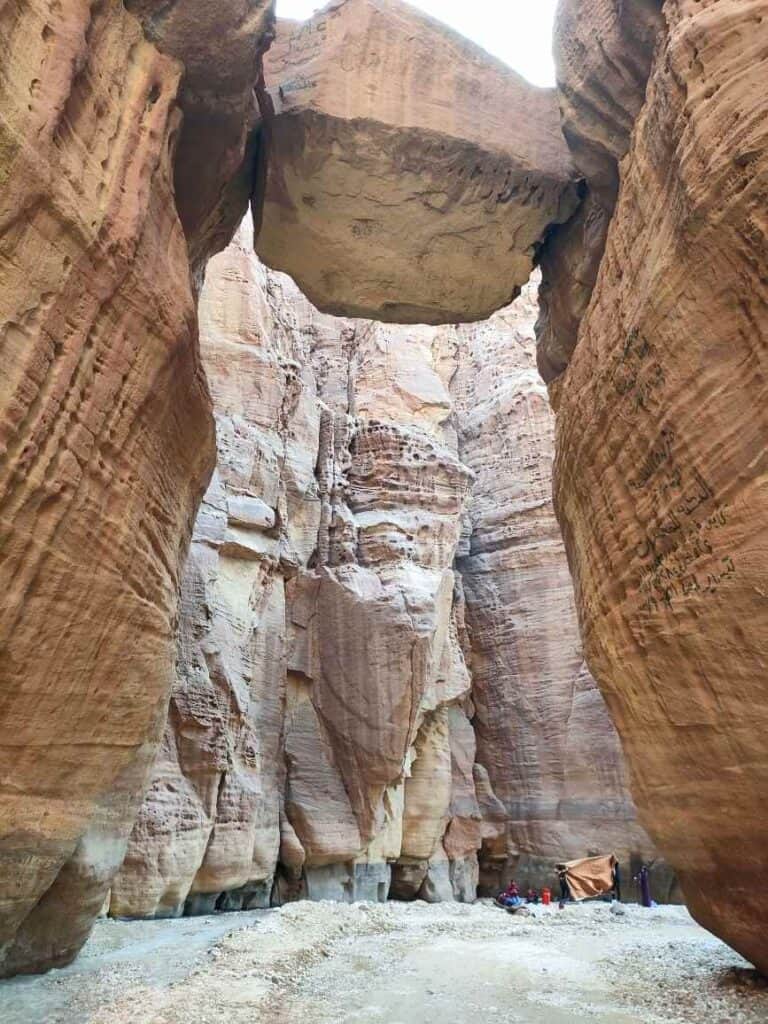
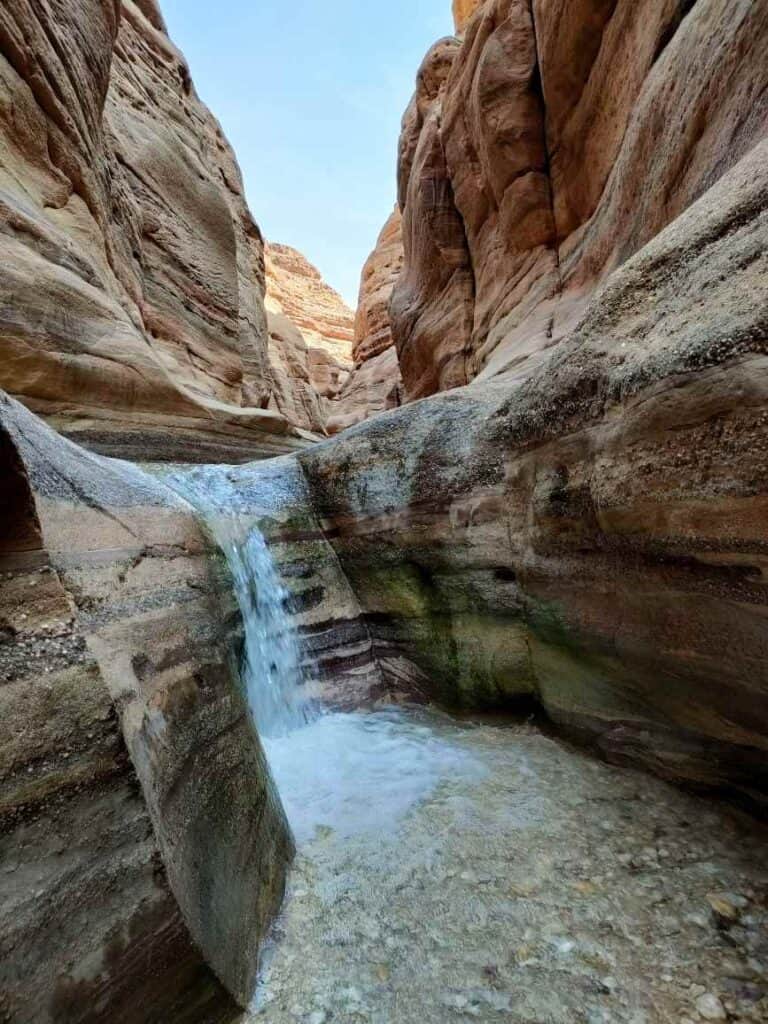
Hammamat Ma’in
A steep road takes up to 1400 meters above the level of the Dead Sea, winding between green hills and barren rocks in different colors. Then a road goes steep down to Zarqa Main, a picturesque valley famous for its hot springs and baths. The popular bathing spot, Hammamat Ma’in, is near the Dead Sea, only 10 km from Madaba.
Ma’in village is known for its mostly Christian inhabitants who live in unique natural stone houses.
A 45-meter-high 40-degree waterfall with a healing effect on rheumatism and skin diseases is a perfect place to relax at the end of the day. There are 60 thermal springs in the spa area, which are 55-60 degrees. The healing effects of the springs were already known in Herod’s time, and the Romans also used them.
How to go to Hammamat Ma’in?
You can only go to Hammamat Ma’in with a rented car or a local tour.
Bethany beyond the Jordan river
The 360-km-long Jordan River originates in the mountains in Syria, crosses the Sea of Galilee, and flows into the Dead Sea.
It is where St. John the Baptist preached and baptized Jesus, the first five apostles met, and the foundations of early Christianity were laid. Jesus migrated here from Galilee and Gadara (Umm Qais) and spent three days in Bethany before his 40-day temptation in the desert. Saint John the Baptist was later captured by order of Herod and beheaded in the castle of Machareus.
The holy site has two parts: Jabal Mar-Elias (Elijah’s Hill), where Elijah ascended to heaven in the 9th century BC and the area of churches, caves, chapels and a monastery near the Jordan river.
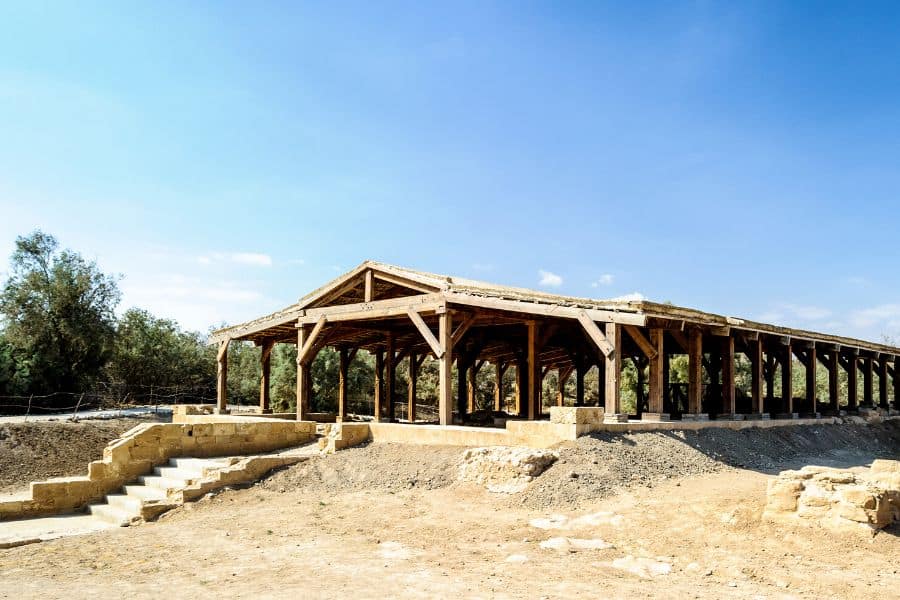
Christian pilgrims often visited the place on their way to Mount Nebo from Jerusalem, and in the Byzantine era, churches and pilgrim houses were built for them. After the 1994 Israeli-Jordanian peace treaty, the site was demined. The subsequent excavations revealed the remains of several churches, caves, wells, and an extensive irrigation canal network. In the spring of 2000, II. Pope John Paul held an open-air mass. Bethany overlooks the Dead Sea, Mount Nebo, Jericho (12km), Jerusalem (27km), and the Jordan River.
Stairs lead to the former riverbank to the baptism site, but the Jordanian site has much fewer visitors than the Western side. This is the only place where we can touch the water of the river with our hands because the entire region of Jordan is a military area closed off from civilians. Those who wish can get baptized in the Jordan river.
How to visit Bethany beyond the Jordan river?
You can only go to Bethany with a rented car or a local tour.
Dana Biosphere Reserve
Dana is the biggest Biosphere Reserve in Jordan, with a beautiful landscape that makes a perfect place to enjoy the beautiful Jordan nature through an easy hike.
There are self-guided trails and some that you should complete with local hiking guides. The 15-km-long path (6 hours) from Dana village to Feynan is the most popular.
Since you finish at another place, ask the Feynan hotel to arrange transport for you. It takes 3 hours to get back to Dana, so you should organize it with other travelers. (45-55 JOD per car)
Along the way, you can spot several different bird species and wildflowers. The trail goes mainly downhill through Bedouin villages.
Where to sleep in Dana village?
There are a couple of traditional stone guesthouses in Dana to choose from.
Dana Tower hotel is the best low-budget hotel with a traditional outlook.
Wadi Dana Lodge and Dana Gate lodge are other cozy hotels in the village.
Dana Guesthouse is not bookable on booking.com but looks great in the photos with a fantastic view.
How to go to Dana?
It is located halfway between Petra and Amman along the King’s Highway.
Dana is one of the places you cannot reach by public transport, so you must arrange a private transfer or rent a car.
This detailed travel guide about the best things to do in Jordan helps you make the perfect itinerary whether you plan to spend 5, 7, or 10 days in Jordan. Your plan will look slightly different depending on your place of arrival (Aqaba or Amman), whether you use public transport, rent a car, or take local tours, and if you are into adventurous hiking. Jordan is one of the most touristic countries in the Middle East, where you should spend at least 5 days, but ideally, you can include cultural and natural sights in a 10-day itinerary.
The Jordan desert castles
The Jordan desert loop consists of 4 desert fortresses: Qasr al Hallabat, Qasr al-Azraq, Qusayr Amra, and Qasr Kharana.
Most of them were built by the Damascus-based Umayyad caliphs (661-750) in the first decades of Islam. Al-Azraq and Al-Hallabat were initially Roman forts that have been converted into Islamic castles. Most tourists do not visit the Jordan desert castles, although they make an excellent easy day trip from Amman.
Read this detailed article about how to visit the Jordan desert castles
Amman
Amman does not have endless tourist attractions, but as the capital of Jordan, this is where you can enjoy the best nightlife, visit bazaars, and taste local specialties. Amman is a must-see in Jordan, like Wadi Rum, Petra, or the Dead Sea.
Read this article about how to spend one day in Amman
Jerash, Ajloun, Umm Qais
Jerash lies 50 kilometers north of Amman, close to the fertile Jordan valley. Gerasa, as it was called during Roman times, became a prosperous city along one of the most ancient trade routes in the world. Visiting the Qal’at ar-Rabad fortress, with a stunning location perched on a hilltop should be your next stop. The Islamic-style military fort was built in the 12th century and enlarged by the Mamluks of Egypt in the 13th. Fewer tourists head to the very north of Jordan, where the ruins of Umm Qais, another city of the Decapolis, are located close to the border with Syria and Israel. The landscape itself is worth the drive up there, with expansive green pastures and flowers that contrast the overwhelmingly deserted other parts of Jordan. During the summer heat, visiting Umm Qais is a real refreshment. So yes, it is definitely worth it!
Check this more detailed article on how to visit Jerash, Umm Qais and the castle of Ajloun on a day trip from Amman
Petra
Petra was a flourishing trade and caravan center hub between the 5th century BC and the 3rd century AD. Hidden among desert rocks, it was once a prominent city of an Arab tribe called the Nabataeans. Most of the monuments in Petra are tombs (the earliest from the 3rd century BC), so for a long time, they thought that Petra was nothing more than a vast necropolis.
Petra is the highlight of visiting Jordan and one of the most famous attractions of the Middle East.
Read this article about the best one and 2 days Petra itinerary
Jordan is more than visiting the Dead Sea, Wadi Rum desert and Petra. If you plan to go hiking in one of the beautiful wadis, or the Dana Biosphere Reserve, you need at least 10 days. The easiest way to travel around Jordan is to rent a car as public transport is not so developed. The recommended 5, 7 and 10 days itineraries provide you with an ideal plan from Aqaba to Amman and from Amman to Aqaba, should your city of arrival be different from the city of departure. If you are traveling the first time to the Middle East, Jordan is probably the best country to start with.
Other articles about Jordan
The perfect Petra one and two-day itinerary in Petra
Visiting Jerash, Ajloun and Umm Qais on a day trip from Amman
Jordan desert castles: a day trip from Amman
All you need to know before traveling to Jordan
The best Jordan itinerary (5, 7 and 10 days)
Other posts about the Middle East
Lebanon
10-day itinerary to visit Lebanon
How to spend 2-3 days in Beirut
Travel guide to Tripoli, Lebanon
Best books to read about Lebanon
Travel during an economic crisis in Lebanon
Iran
What you can and cannot do in Iran
45 things you must know before traveling to Iran
The best books to read about Iran
The best 2-week itinerary in Iran (the classical route)
All you need to know about the Iranian currency
Traveling around Lebanon during the economic crisis
The best things to do in Tehran
Travel guide to Tabriz, North Iran
Travel guide to Mashhad, the holy city of Iran
Best things to do in Lahijan, the city of tea in Iran
Best things to do in Ramsar at the Caspian Sea
Visit Varzaneh desert, Toudeshk, Mesr desert and Garmeh from Isfahan
Iraq
All you need to know before traveling to Iraq
What to visit in Baghdad in 3-4 days
The best books to read about Iraq (constantly updated)
Visiting Lalish, the holy place of Yezidi people
How to visit Babylon and other places around Hillah
Most interesting places to visit in Iraq
The best places to visit in Tehran (museums, palaces, religious sites)
Pin it for later!
